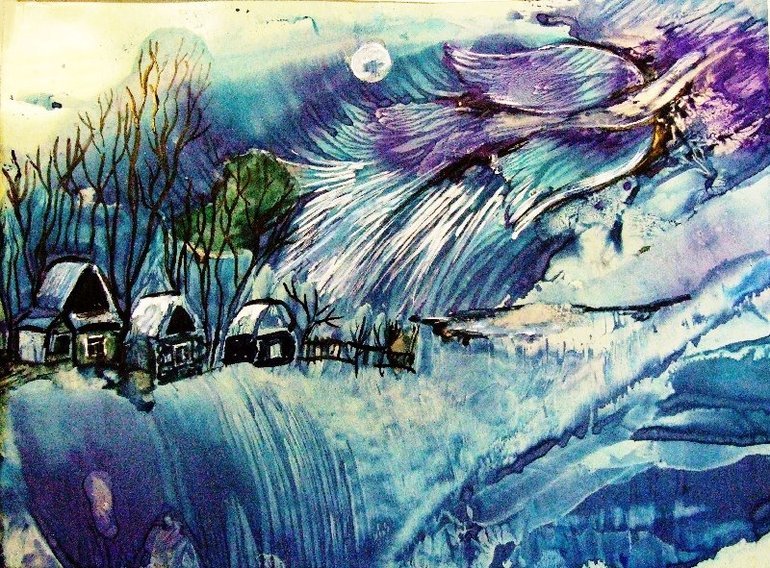Among the artists-beginners popular monotype. The simplicity and attractiveness of this technology due to its lightness, tolerance for errors and faster results. When creating drawings for prints are widely used elements of the abstract and random strokes that leaves plenty of room for the imagination of the author. Each monotype designed to be a unique and the only of its kind, which makes it particularly valuable for the artist.

Content
- general description
- History monotypes
- Features of technology
general description
Create a monotype is quite simple. This would require either a printing plate with a smooth surface. It can be made of metal, plastic, or a conventional organic glass. If this hand was not there, you can use paper or cloth.
Textiles for the figure should be clearly laundered and ironed, but not starched, have a rough surface and a pronounced texture. Before his work stands firmly pull on a piece of cardboard or board and secure with thread.
Selecting a plate on its surface is applied to the image. This can be done in many different ways: from classical painting brushes of different thicknesses to random strokes sponge, spraying, printing the forms and so on. For work is important to choose colors that are long time to dry (The most commonly used oil), or monotype print will not work. Artists are advised to apply the paint carefully, avoiding a broad stroke - will otherwise shapeless stain. When drawing on the fabric is important not to close it completely weaving.

Sometimes pattern is applied by painting complete the entire plateAnd then erasing of individual sections. So monotype comes more precise, with strong contours. Whitewash in the art do not apply - any failed element of the composition can be erased without them, simply by removing the ink from the plate.
After the pattern is ready, it is placed on a sheet of paper. Previously it is moistened, and the top cover sheet of cloth, felt or other dense tissues. Then plate is passed through a printing machine or press with modest pressure. If such was not at hand, you can simply cover the paper with a piece of glass or plastic, and tightly squeeze the hands or cover with a dense object - so figure also imprinted.
Typically, one plate is removed only one monotype. A large amount of ink remains on the paper, so that subsequent copies out much paler and mediocre original.
History monotypes
Monotype for the first time began to be applied in the forties of the XVII century. Some sources attribute its creation by Italian painter Giovanni Benedetto Castiglione, others - Flemings Antonis Sallartu. It is known that the two artists began to use this technique with a difference of only 3-4 years. In this case, they were radically different styles: Castiglione paint over the plate, and then applied in a pattern of black and white lines, and Sallart used strokes and white highlights.
Widespread monotype received in the XVIII-XIX centuries. She enjoyed these artists:

- William Blake;
- Edgar Degas;
- Camille Pissarro;
- Paul Gauguin;
- Paul Klee.
In XX century, the popularity of monotypes increased. There were unique works of Elizabeth Kruglikova Marc Chagall. Who is interested in technology by both professionals and budding creators.
Features of technology
The main feature of monotypes considered its simplicity. Drawing of this technique may be applied without a preliminary sketch spontaneously causing colored spots and patterns on the form. A mistake or a bad fragment can be easily remedied by removing the bad lot with a damp cloth or a cotton pad. This allows you to redraw and add to the composition a lot of time without fear to spoil the work.
To make the product in the technique of monotype more memorable and interesting, use additional methods of expression. Some of them:

- underline print circuits dark ink, in harmony with the main color pattern;
- Erasing a small amount of paint at the edges of the picture using a brush or a wooden stick - is obtained even white contour;
- Use of different ways smears overlays - instead of the normal lines do them as commas, drops, dots, waves, spray, which in repelling original form unique patterns;
- use of a soapy foam to create circles and rings.
Due to the vast possibilities for the development of imagination and abstract thinking, monotype loved psychologists and child educators. It is also very simple, because is suitable for beginners. Each sample-mark, made in this technique is considered to be unique and unique. Even if you remove the plate several kartin- "ghosts", they will be markedly different from the original.



